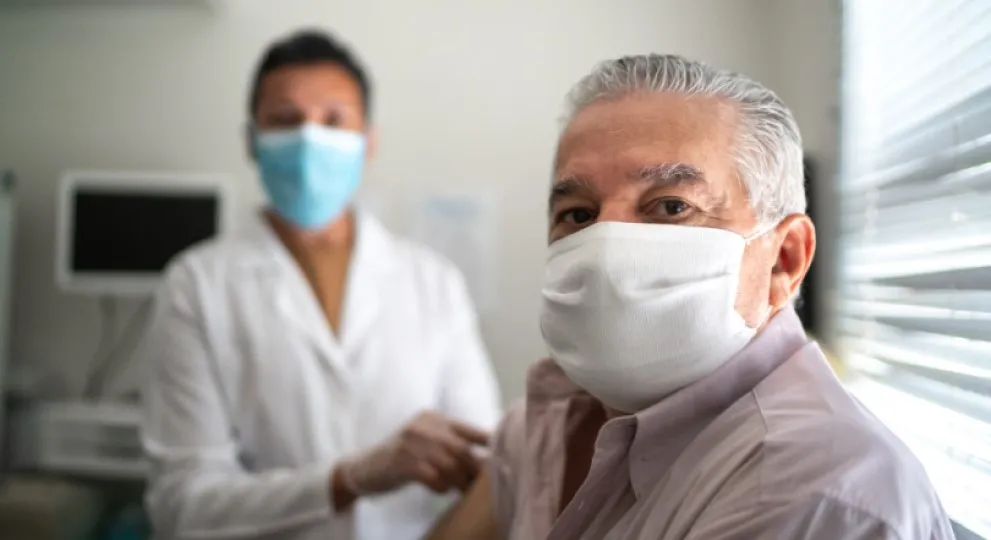How Clinical Trials Have Changed During COVID-19
How Clinical Trials Have Changed During COVID-19

Clinical trials are an important part of cancer care research. Often, they provide data on how well cancer treatments work and how safe they are and help healthcare providers understand how to use them. Clinical trials can also help the US Food and Drug Administration (FDA) decide if they should approve new treatments.
The COVID-19 pandemic brought about new challenges in clinical trials. For example, some potential participants were less likely to enroll because of fear of increased COVID-19 exposure. Some people who do sign up end up canceling visits and even dropping out. Fewer staff and extra safety steps can also make it harder for those running trials.
Even so, clinical trials have continued and adapted, with the goal of maintaining the things that make them trusted and important. Among other changes, people who run clinical trials now rely more on technologies like electronic consent forms and telemedicine. They are also allowing those enrolled in trials more options when it comes to where they can have procedures such as blood tests done.
The pandemic required these changes to be made quickly. Many were already being discussed to help make trials more convenient and affordable. These same practices are now also being used in everyday care. (Check out these guides to help prepare for in-person doctor visits and telehealth appointments during COVID-19.) This is in line with the goal of clinical trials, since they are made to find new and better ways to manage diseases.
The “Gold Standard”
Clinical trials offer the most reliable data on how people living with cancer respond to treatments. Clinical trials help doctors learn whether new treatments are safe and effective and work better than current treatments. They also help doctors learn what side effects are common and how patients feel when they are being treated. Some clinical trials offer people access to research medicines still being studied that have not yet been approved and are not yet available outside of clinical trials.
Clinical trials are designed with the patients in mind. Researchers are required to follow strict rules to protect the safety and privacy of people in clinical trials. For example, researchers must have “informed consent” from participants. This means that before a person joins a clinical trial, researchers make sure they understand what is involved. Researchers explain what to expect and what might happen, such as possible side effects. Potential participants also have a chance to ask questions.
Additionally, each clinical trial has a specific plan or protocol. As part of this, researchers choose what kinds of measures to study and how to study them. An Institutional Review Board, or IRB, at each site reviews the protocols to make sure that risks to participants are as low as possible. Many clinical trials are also supervised by a Data and Safety Monitoring Committee made up of experts, in addition to the IRB.
Cancer Clinical Trials in a COVID-19 World
COVID-19 disrupted clinical trials the most during the early days of the pandemic. In April 2020, new participation in clinical trials dropped by 80% compared with April 2019. By June, almost 1,000 organizations had reported disruption in more than 1,200 trials.
The pandemic is having a big impact on people living with cancer, as they are often “immunocompromised.” This means their immune system is not able to fight infections, such as COVID-19, as well as people with healthy immune systems. This is because some forms of cancer, and many cancer treatments, may weaken the immune system. An April 2020 report found that over a quarter of the trial disruptions were in cancer research. This was more than any other field of medicine.
The Coming Change in Clinical Trials
People running clinical trials have had to make major changes to meet these challenges. One change was shifting from meeting with patients in person to using remote, digital tools when possible. Some monitoring can be done through telemedicine and entering information in an online portal. One survey of clinical trial programs in March 2020 found that 87.5% of respondents reported implementing telehealth visits due to COVID-19. These types of changes to clinical trials are similar to what’s going on in routine care. For example, Medicare and Medicaid are now covering more of the cost of telemedicine appointments. Some private insurers are as well.
The pandemic also led to rule changes at the FDA and state agencies that allow for more options where people can be seen. For example, some trial participants may have their tests done at small clinics close to where they live instead of centers that may be harder to get to. The FDA and state medical boards also eased rules on shipping medicines to trial participants. This gives patients more options to receive care.
Coming Out of the Pandemic Stronger
COVID-19 spurred a lot of changes that were already in the works before the pandemic. Things such as telemedicine and flexibility in choice of trial site help make clinical trials more convenient for patients. These and other changes can also help ease issues that may come with regular clinic visits. These could include covering the cost of traveling, childcare and missed work. Reducing barriers can also help clinical trials recruit more, and more diverse, participants.











